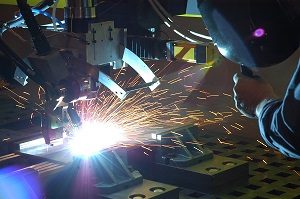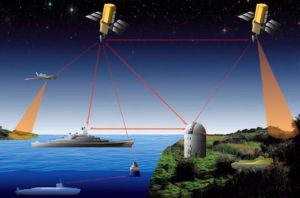Laser Applications For Engineering Physics First Year:
Many scientific, military, medical and commercial laser applications have been developed since the invention of the laser in 1958. The coherency, high monochromaticity, and ability to reach extremely high powers are all properties which allow for these specialized applications.
Medical Uses of Lasers:
The highly collimated beam of a laser can be further focused to a microscopic dot of extremely high energy density.
This makes it useful as a cutting and cauterizing instrument. Lasers are used for photo coagulation of the retina to halt retinal hemorrhaging and for the tacking of retinal tears. Higher power lasers are used after cataract surgery if the supportive membrane surrounding the implanted lens becomes milky. Photo disruption of the membrane often can cause it to draw back like a shade, almost instantly restoring vision. A focused laser can act as an extremely sharp scalpel for delicate surgery, cauterizing as it cuts. (“Cauterizing” refers to long-standing medical practices of using a hot instrument or a high frequency electrical probe to singe the tissue around an incision, sealing off tiny blood vessels to stop bleeding.) The cauterizing action is particularly important for surgical procedures in blood-rich tissue such as the liver.
Lasers have been used to make incisions half a micron wide, compared to about 80 microns for the diameter of a human hair.
Welding and Cutting:
The highly collimated beam of a laser can be further focused to a microscopic dot of extremely high energy density for welding and cutting.
 The automobile industry makes extensive use of carbon dioxide lasers with powers up to several kilowatts for computer controlled welding on auto assembly lines.
The automobile industry makes extensive use of carbon dioxide lasers with powers up to several kilowatts for computer controlled welding on auto assembly lines.
Garmire points out an interesting application of CO2 lasers to the welding of stainless steel handles on copper cooking pots. A nearly impossible task for conventional welding because of the great difference in thermal conductivity between stainless steel and copper, it is done so quickly by the laser that the thermal conductivity are irrelevant.
Surveying and Ranging:
Helium-neon and semiconductor lasers have become standard parts of the field surveyor’s equipment. A fast laser pulse is sent to a corner reflector at the point to be measured and the time of reflection is measured to get the distance.
Some such surveying is long distance! The Apollo 11 and Apollo 14 astronauts put corner reflectors on the surface of the Moon for determination of the Earth-Moon distance. A powerful laser pulse from the MacDonald Observatory in Texas had spread to about a 3 km radius by the time it got to the Moon, but the reflection was strong enough to be detected. We now know the range from the Moon to Texas within about 15 cm, a nine significant digit measurement. A pulsed ruby laser was used for this measurement.
Lasers in Communication:

Fiber optic cables are a major mode of communication partly because multiple signals can be sent with high qualityand low loss by light propagating along the fibers. The light signals can be modulated with the information to be sent by either light emitting diodes or lasers. The lasers have significant advantages because they are more nearly monochromatic and this allows the pulse shape to be maintained better over long distances. If a better pulse shape can be maintained, then the communication can be sent at higher rates without overlap of the pulses. Ohanian quotes a factor of 10 advantage for the laser modulators.

R